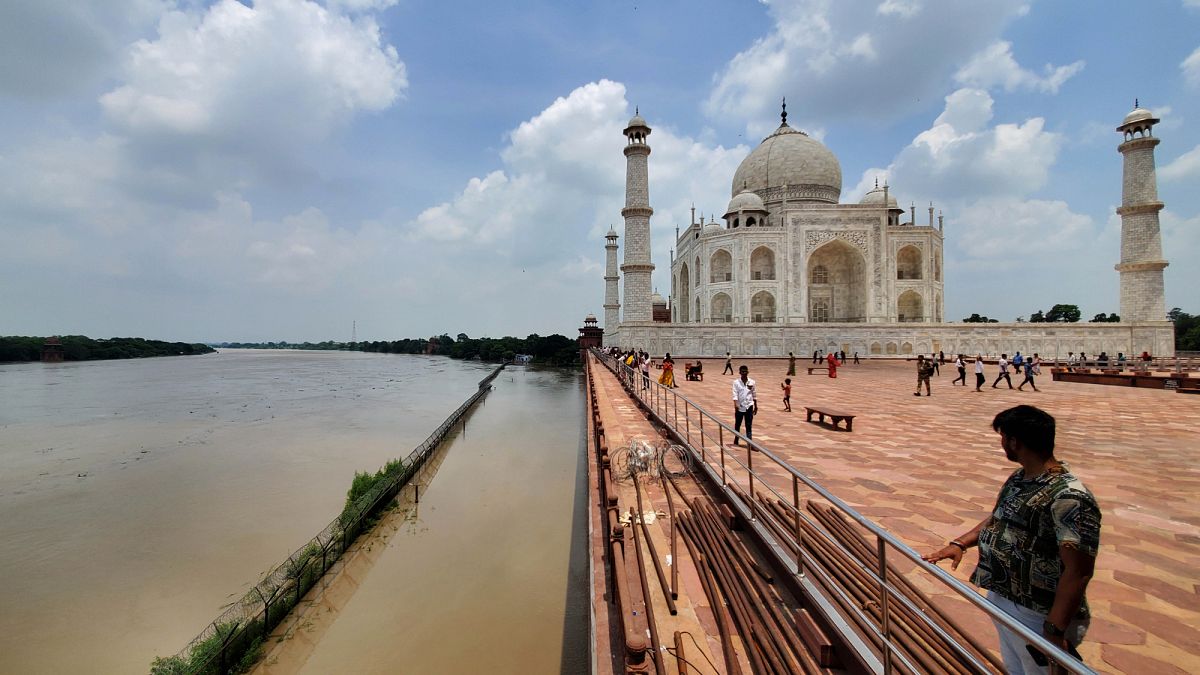

In recent times, the world has witnessed a growing number of climate-related events that pose significant risks to environments, infrastructure, and human lives. These events, accentuated by changes in climate patterns, have brought attention to the pressing need for comprehensive strategies to mitigate their effects and safeguard both heritage and life on our planet.
An insightful report highlights the vulnerability of UNESCO World Heritage sites, such as the Taj Mahal and the Acropolis, which are increasingly under threat from severe water risks. This underscores a broader concern that climate change could accelerate damage to cultural landmarks globally, emphasizing the need for forward-thinking conservation strategies and infrastructure investments to mitigate water-related impacts.
In Europe, recent severe weather conditions have disrupted air and rail traffic, notably in Hungary, as storms battered the region. Budapest Airport faced temporary closure due to flooding, and cities including Zagreb, Belgrade, and Ljubljana were also affected. These challenges highlight the necessity for resilient infrastructure that can withstand such climatic vicissitudes, ensuring the continuity of essential services and safeguarding livelihoods.
Despite the challenges posed by climate change, there are examples of resilience and innovation. Europe’s electricity grids, for instance, have demonstrated robustness during recent heatwaves, largely due to solar power’s contribution. Storing solar energy is seen as a promising strategy to strengthen energy grids, as evidenced by the energy demands in nations like Germany, France, and Poland during periods of high temperatures. This development signals a positive trend toward sustainable energy solutions that align with environmental goals.
Meanwhile, the eastern Mediterranean region grapples with the perennial threat of summer wildfires, exacerbated by climate dynamics. Travelers to Greece and Türkiye are advised to remain informed about safety measures during wildfire season. This advice underscores the importance of preparedness and resilience planning, integral to mitigating the human and ecological impacts of wildfires.
Across the Atlantic, Texas recently experienced catastrophic flash floods, attributed to storm systems heightened by remnants of Tropical Storm Barry. The floods led to tragic losses, underscoring the significant risks posed by flash floods in areas like Texas’s “Flash Flood Alley.” Such occurrences are poignant reminders of the urgency in developing adaptive strategies that include predictive modeling and emergency response systems.
In Asia, the mountainous state of Himachal Pradesh in India faces similar climate-induced challenges. Unusually heavy rainfall over a short span led to flash floods and landslides, resulting in considerable destruction of homes, roads, and bridges. The region is reeling from the aftermath, prompting efforts to improve disaster preparedness and response mechanisms in vulnerable areas.
The convergence of these incidents across continents highlights a fundamental reality: climate-induced weather events are a pervasive challenge requiring a coordinated global response. As such, developing comprehensive frameworks that encompass risk reduction, sustainable urban planning, and technological innovation is imperative. By fostering international collaboration and harnessing the potential of renewable energy, societies can enhance resilience to environmental challenges and protect shared cultural and natural heritage for future generations.
Source: {link}
